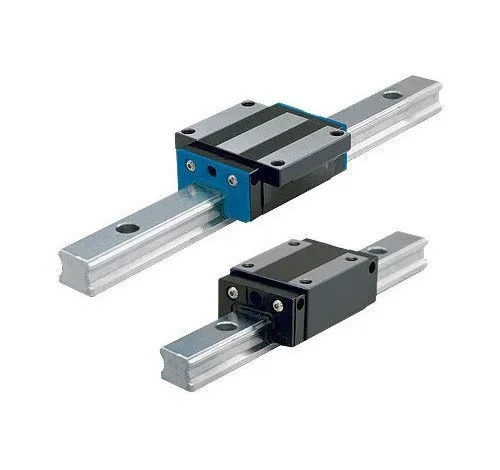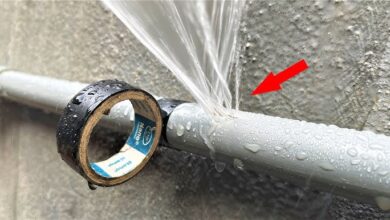Exploring the Different Types of Linear Guide Bearings and Their Applications

Linear guide bearings are essential components in many types of machinery. These critical devices ensure that parts can move smoothly and precisely in a straight line. This is crucial for the proper functioning of various equipment.
In industries such as manufacturing, robotics, and automation, the ability to achieve smooth linear motion can greatly enhance efficiency and accuracy. Let’s dive into the different types of linear guide bearings. Explore the common applications where they are used.
Ball Bearings
Ball bearings are the most common type of bearings used in various applications. They contain small metal balls that help reduce friction and facilitate smoother movement. These ball bearings can be found in everyday items such as:
- roller skates
- bicycles
- some computer hardware
By allowing parts to move with less resistance, ball bearings play a crucial role in the efficient functioning of many devices and machines. Their widespread use in different industries. It showcases their importance in making mechanical operations more effective and reliable.
Roller Bearings
Roller bearings use small cylinders instead of balls. These cylinders, known as rollers, are excellent for handling heavier loads. They distribute the weight over a larger surface area. This makes roller bearings especially useful in situations where heavy weight needs to be supported.
Such as in conveyor belts and large machinery. By reducing friction and wear, roller bearings help these machines run more smoothly and efficiently over time. Roller bearings are important in many industries.
In the automotive industry, they are used in the wheels of cars and trucks to ensure a smoother ride and to support the vehicle’s weight.
Needle Bearings
Needle bearings have long, thin cylinders, which makes them perfect for tight spaces. These bearings are commonly used in the automotive and aerospace industries, where space and weight are very important. The unique shape of needle bearings, being long and narrow, allows for efficient use of limited space.
They can fit more rollers in a smaller area compared to other types of bearings. This is a big advantage. Because of this, needle bearings are popular in many applications, such as gearboxes, engines, and transmissions.
Their ability to handle heavy loads while taking up less space makes them a valuable component in different machines and vehicles.
Plain Bearings
Plain bearings, also known as bushings, are a type of bearing that doesn’t include any moving parts. They work by using a smooth surface to reduce friction between two surfaces. You can often find them in everyday household appliances and simple machinery because of their straightforward design.
This simplicity means they are low-cost. It’s also easy to maintain. These bearings are perfect for situations where only minimal movement is needed. Such as in hinges or door handles. Due to their durability and ease of use, plain bearings are a popular choice for many basic applications.
Magnetic Bearings
Magnetic bearings use magnetic fields to support moving parts. They are very high-tech and are used in applications like advanced medical devices and high-speed trains. By getting rid of the need for physical contact between parts, magnetic bearings can achieve smooth and precise movement.
This is important in situations where even slight vibrations or friction can have significant consequences. Their advanced technology and ability to provide high-precision movement make magnetic bearings a key part of many modern applications.
Air Bearings
Air bearings use a cushion of air to minimize friction. They are often found in ultra-precise machines like those used in semiconductor manufacturing. These bearings are also crucial in applications. It needs the ability to move in multiple directions. By using a steady flow of air, they can offer smooth movement in any direction.
This allows for more flexibility and precision in operations. This is important because it helps machines work more accurately and efficiently. Air bearings reduce wear and tear on machinery components. It extends the lifespan of the equipment and ensures reliable performance over time.
This technology is vital for industries that require high levels of accuracy and reliability in their manufacturing processes.
Linear Rail Guides
Linear guide rails consist of a rail and a bearing block that moves along it. These are widely used in industrial machinery for precise movements. This type of bearing is useful in applications where a load needs to be moved back and forth in a straight line.
Guide rail bearings offer high accuracy and repeatability. They can handle heavy loads with ease. Because of these features, it’s commonly used in:
- CNC machines
- 3D printers
- machine tools
- other automated systems
These rails ensure that the machinery operates smoothly and efficiently, which is crucial for maintaining high-quality production standards.
Crossed Roller Bearings
Crossed roller bearings are a special type of bearing where the rollers crisscross each other. This unique arrangement allows them to handle loads coming from multiple directions at once. These bearings are commonly used in robotic arms and medical equipment.
They can support heavy loads while still maintaining high levels of precision and rigidity. The special design of crossed roller bearings makes them very strong and reliable, which is why they are so important in fields that require exact movements and stable performance.
With their ability to manage weight and pressure from all sides, crossed roller bearings are essential for advanced machinery that needs to operate smoothly and accurately.
Spherical Bearings
Spherical bearings are used when parts need to move in multiple directions. Such as in the joints of car suspensions or aircraft control systems. They can handle large loads and offer smooth movement in different directions without losing accuracy.
These versatile bearings are crucial in ensuring the stability and safety of various vehicles. Thus, making them an integral part of linear motion systems.
Understand the Different Types of Linear Guide Bearings and their Applications Today!
Linear guide bearings come in many different forms and can be found across a wide range of industries. Each type has its unique features that make it suitable for specific applications. Linear guide bearings play a vital role in making mechanical operations more efficient and reliable.
As technology continues to advance, we can expect to see even more innovative uses of these essential components in various industries.





Very interesting info!Perfect just what I was looking for!Blog monetyze